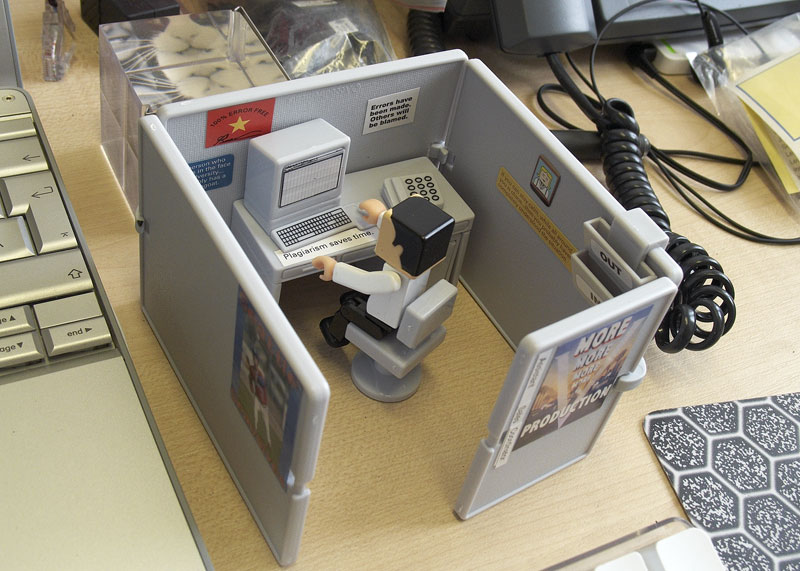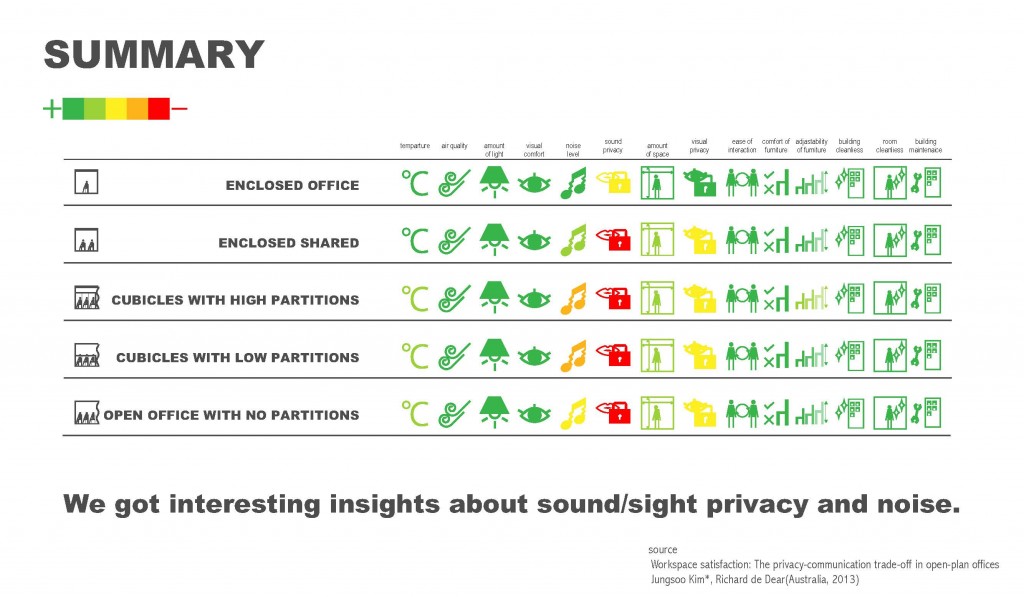
- Under CC License
Defining a user and types of workspaces is a challenge. When defining the workspace we can think of the workspace in its traditional form and shape, the cubicle as you see in the picture on the right. After doing some research there are multiple ways of looking at the workSPACE and workPLACE. The workplace is not anymore a fixed physical place where people have designated desks. The definition workplace has become one that can be interpreted in different ways. More and more people work from home, at coffeeplaces, and there are distinctions to be made in different types of workspaces as well. A way to differentiate is by using the physical space and person-density as the common denominators as Kim & Dear (2013) have done. [1]
To make their article more understandable we visualized their findings to uncover the bottlenecks and problems different sorts of offices face.

We found that the aspects of the working environment that most influence the worker are the ‘sound privacy’. This can be defined as the ability to have conversations without your neighbours overhearing and vice versa. Secondly the ‘noise level’ was one of the aspects that varied within different workspaces. Finally the ‘visual privacy’ which indicates the way others can see you while your working and vice-versa was a variable that was found to cause problems within some workspaces. The results “categorically contradict the industry accepted wisdom that open-plan layout enhances communication between colleagues and improves occupants’ overall work environmental satisfaction”. We see that there is a need for a reconceptualization of the issues surrounding the satisfaction level of the office space.
- Kim, Jungsoo, and Richard de Dear. “Workspace satisfaction: The privacy-communication trade-off in open-plan offices.” Journal of Environmental Psychology 36 (2013): 18-26.







